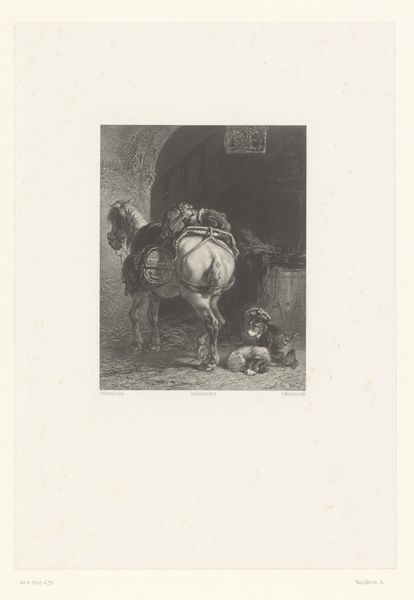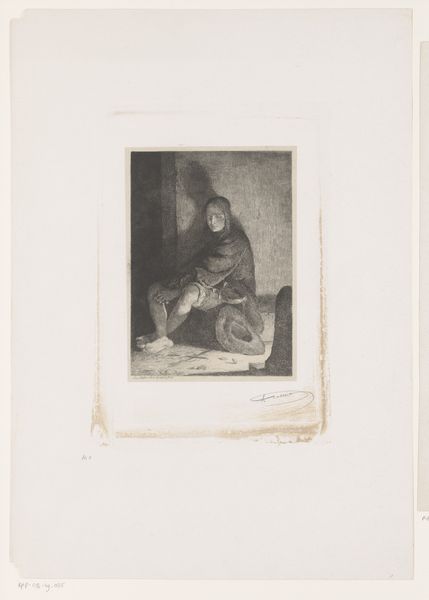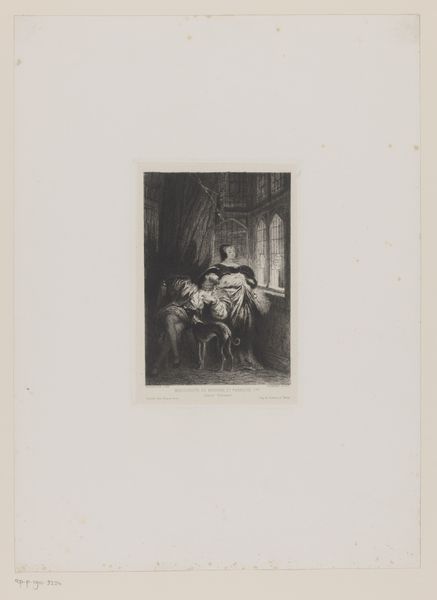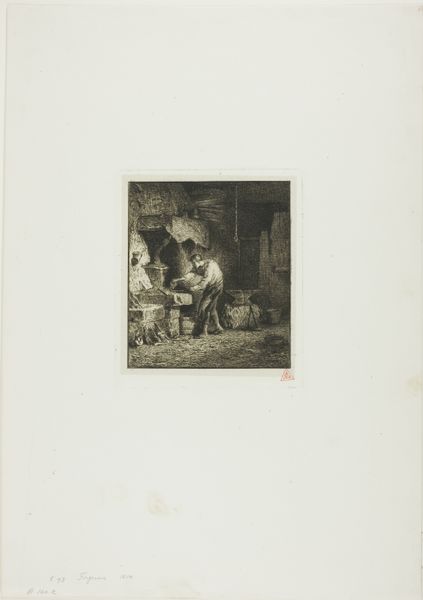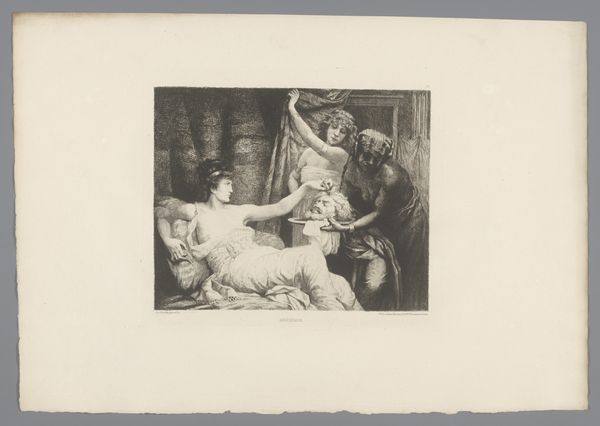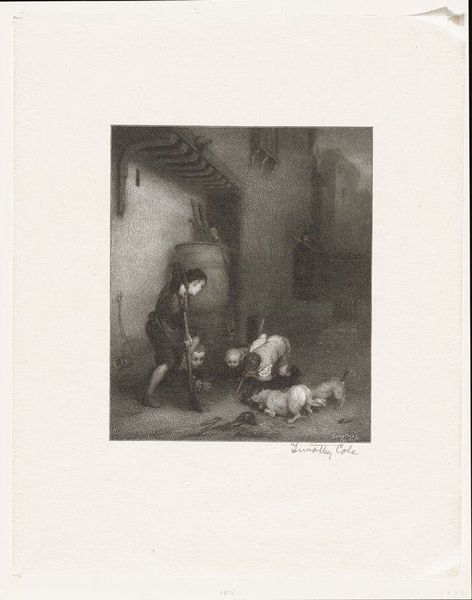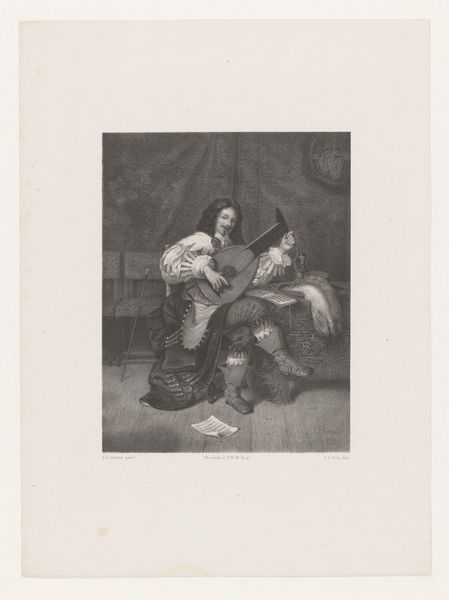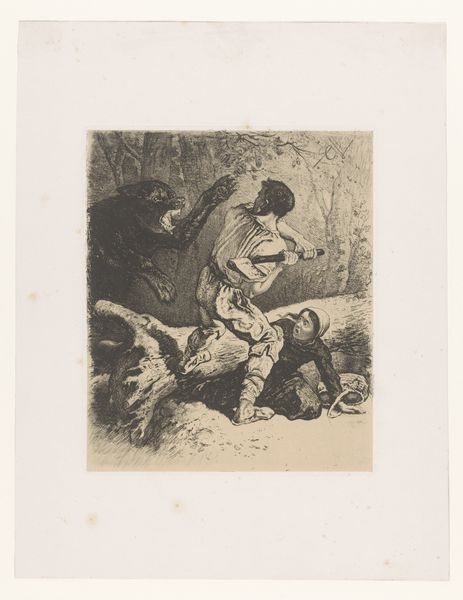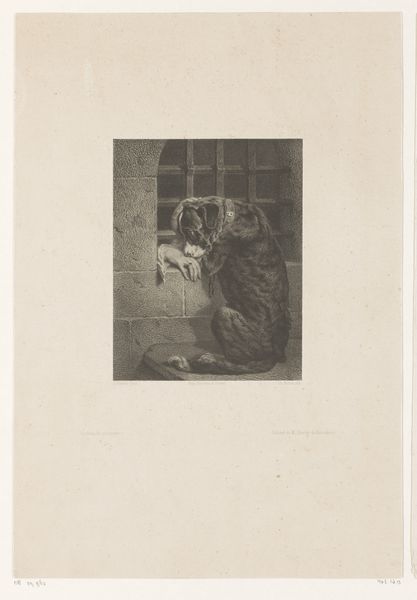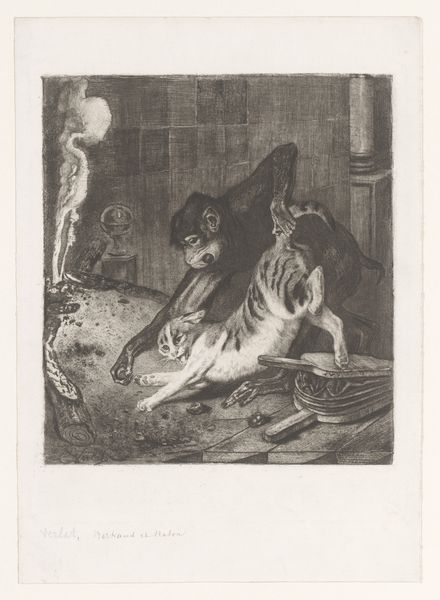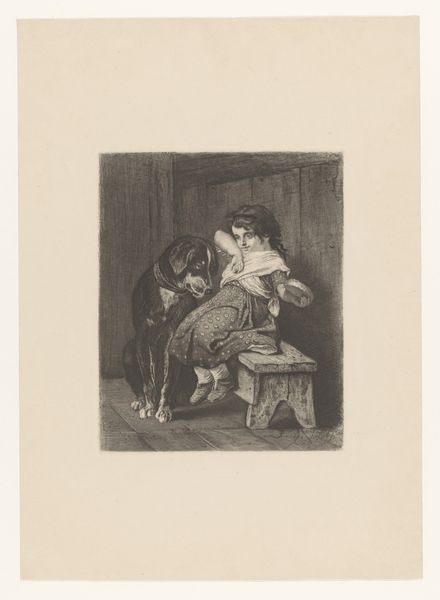
Gevangene met rozenkrans in zijn hand 1847 - 1863
0:00
0:00
Dimensions: height 325 mm, width 255 mm
Copyright: Rijks Museum: Open Domain
Desiré Oscar Léopold von Franckenberg en Proschlitz created this work with graphite, depicting a prisoner with a rosary. The rosary, a string of beads used for prayer, emerges here as a potent symbol of faith and repentance amid confinement. But the rosary's significance extends far beyond this cell. Consider its echoes in ancient prayer beads of various cultures, from the Hindu mala to the Muslim tasbih. These objects, like the rosary, serve as aids to meditation, rhythmic reminders of spiritual devotion, and a universal desire to connect with the divine. Yet, within the gaol, the rosary acquires a particular weight. Its circular form, endlessly repeating, mirrors the cyclical nature of guilt and redemption. This resonates psychologically, tapping into our collective memory of sin and absolution, the subconscious desire for spiritual purification. The man's downcast eyes and the tangible weight of the beads exude deep emotional states. This symbol reflects the cyclical nature of repentance, a recurring motif throughout history, resurfacing in art and religious practices. Its persistence speaks to the human condition's timeless struggles and the enduring quest for meaning.
Comments
No comments
Be the first to comment and join the conversation on the ultimate creative platform.
